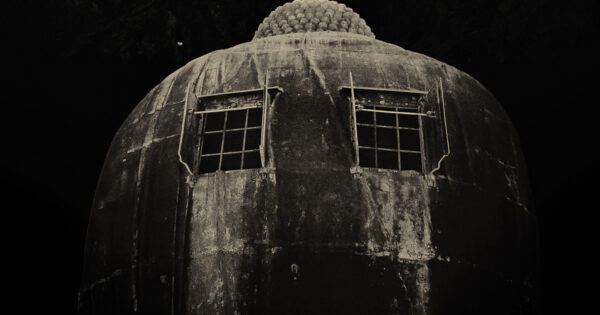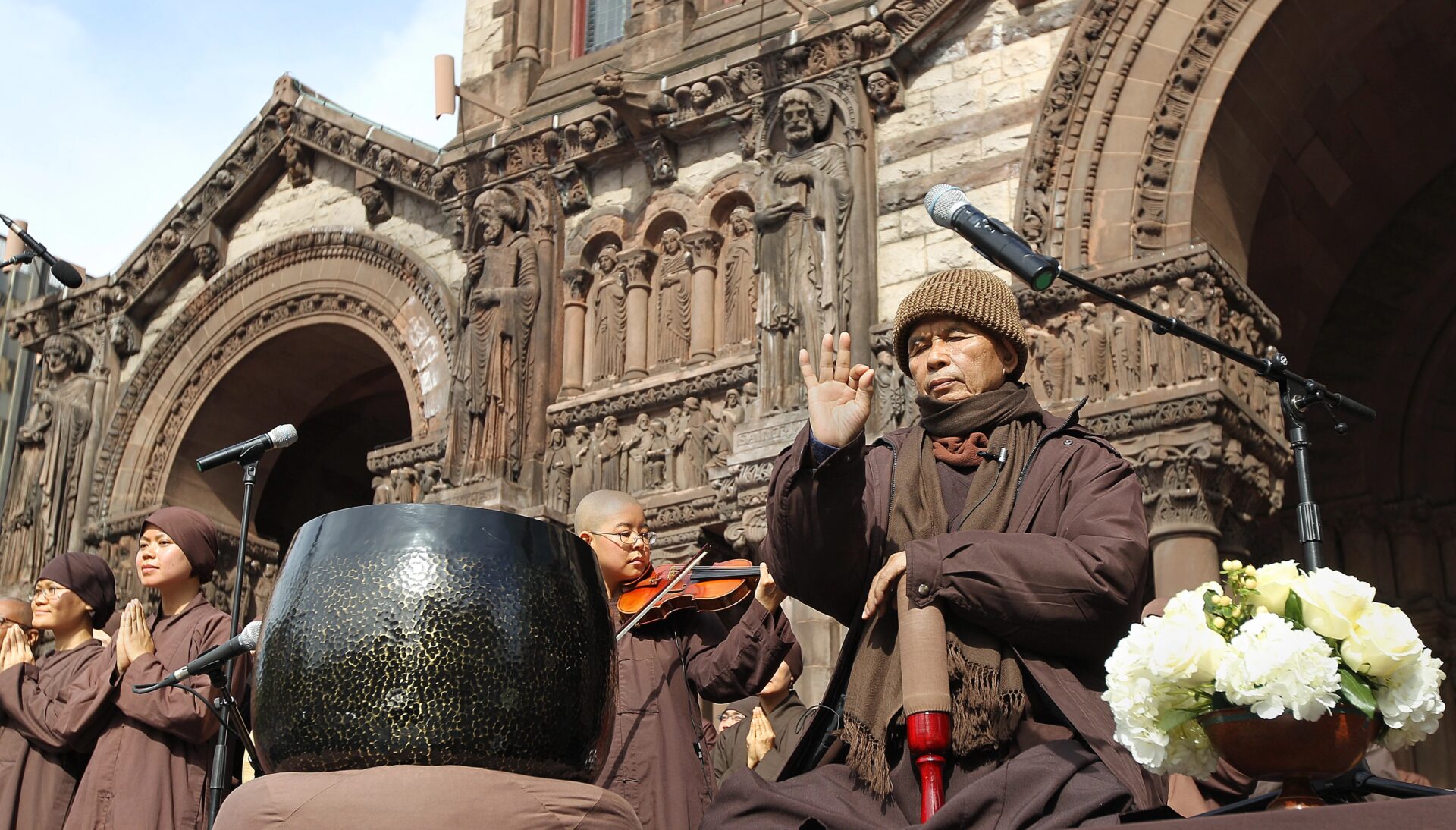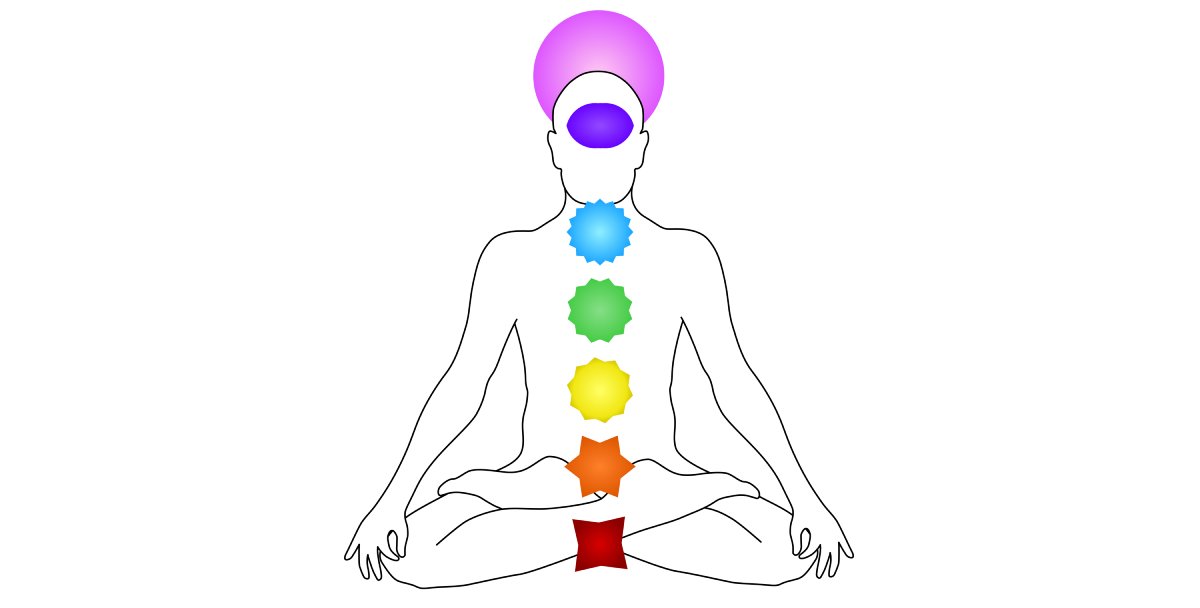The Practice of No Practice
“How do we come to trust in Amida Buddha’s generosity and compassion?” asks Nagapriya. He explores Shinran’s teachings and the practice of nembutsu. I am such that I do not know right and wrong And cannot distinguish false and...

“How do we come to trust in Amida Buddha’s generosity and compassion?” asks Nagapriya. He explores Shinran’s teachings and the practice of nembutsu.

“The Mouth of Krishna, Japan,” 2014. #241 by Albarrán Cabrera. Palladium print. © Albarrán Cabrera.
I am such that I do not know right and wrong
And cannot distinguish false and true;
I lack even small love and small compassion,
And yet, for fame and profit, enjoy teaching others.
—The Collected Works of Shinran
While at first glance this might not seem much of a consolation, according to Shinran (1173–1263), the founder of the Jodo Shinshu or True Pure Land School in Japan, an honest assessment of our own limitedness is the beginning of a more sincere relationship to dharma practice, to oneself, and to others. That honesty is the catalyst for a metanoia, a “change of mind” or conversion. Once we learn to recognize that our ego-directed effort is ultimately futile in the pursuit of spiritual liberation, we can begin to live in a way that more fully honors how things are.
I was not trained in the Shin, or Pure Land, tradition. When I first encountered Shinran’s teachings, I felt as though I had been given permission to put down an enormous burden that was crushing me. Shinran confirmed that my ego-directed efforts would only serve to enmesh me further in samsara, like a coyote caught in a snare, every attempt to free myself just tightening the noose, and redoubling my suffering and hopelessness.
The orientation and language of Shin Buddhism is explicitly religious. It relies upon a transcendent factor, a beneficent influence that is beyond our individual capacities, that is beyond our own karma.
Based on his awakening to his own spiritual fraudulence, Shinran came to realize that he could never be the agent of his own liberation because his very aspiration to do so was tainted by his incorrigible greed, hatred, and delusion. There was no advancing, no smooth ascent; all such ideas are nothing more than ways to inflate the fragile ego, which reality must inevitably puncture. Such ideas, he came to realize, had nothing to do with what the Buddhist life is really about, since what is required is not the culmination of the egocentric vision but rather its transcendence. In other words, what is called for is the renunciation of the quixotic attempt by the ego to liberate itself, an attempt inherently doomed to fail.
This misguided project is known in more technical terms as the “self-power” (jiriki) approach to spiritual freedom. Shinran came to place his confidence not in his self-power but rather in other-power, or tariki. Other-power turns out to be Amida or Amitabha (“infinite light”), a cosmic buddha whose legend is told in a group of texts known as the three Pure Land scriptures. Eons ago, Amida made a series of vows, which they then fulfilled on the arduous path toward awakening (here and elsewhere, I use the gender-neutral pronoun to refer to Amida).
According to Amida’s vows, we are basically guaranteed awakening if we just invoke Amida’s name sincerely. That’s right; all we need do is call Amida’s name sincerely through what came to be known as the nembutsu: namu amida butsu, Homage to Amida Buddha. That’s all. It sounds too easy, doesn’t it?
According to Shinran, this simple practice becomes the portal through which Amida’s incalculable spiritual merits are entrusted to us. To put it another way, through the nembutsu, Amida’s awakened mind is gifted to us so that it becomes ours. Our mind fuses with the awakened mind. This strikes at the heart of the tantalizing and puzzling message of True Pure Land Buddhism. It all seems so easy, and yet doubts persist. How do I know if this has happened or not? We can all recite the name, but how do we know if we have done it sincerely? Self-doubt, or lack of reliance on other-power, drives us to keep striving, to persist in trying to make ourselves worthy through discipline and good works. Yet, says Shinran, this desperate effort just digs us deeper into our spiritual predicament, since it is rooted in ego-clinging.
So how do we come to trust in Amida’s generosity and compassion? And what does that even mean?
The Vision of Shin Buddhism
Shinran is historically, culturally, linguistically, and religiously distanced from us. His lifeworld is now lost in the sands of time, and I suppose we can never retrieve it, not exactly. Yet he left a treasure trove of writings that we can pick through in order to come to an enlarged understanding of ourselves right now. We live at a time when the transcendent is, for many people, no more than an outdated superstition, where consciousness is flattened, where the highest value is the grasping, individual will. We live mostly in a deconsecrated world. Disenchantment with traditional theological visions of human existence has provoked reaction, even a radical atheism that sees religious perspectives not simply as wrong or naive but even as menaces to right-thinking people. Yet the flattened narratives that we now tell ourselves about who we are and what we are here for never satisfy.
Buddhism is part of this landscape. A trend in the Western assimilation of Buddhism has been to deconsecrate it. Rather than framing it as a religion, a word that for many people is now irredeemably contaminated, Buddhism is exalted as a philosophy or even a way of life. It is seen as rational, empirical. It demands no metaphysical leap of faith. As part of this trend, Buddhist teachings and practices have been brought into alignment with evolution, with neuroscience, and with modern psychology. Buddhism has been greedily assimilated by the self-help genre and adorns the well-being spa. What could be more soothing than to go for a hot-stone massage and encounter a Buddha figure cradling a scented candle in his lap? A lot of what passes for Buddhism has been shorn of its traditional cosmology, its ritual language, and even its reverence and devotion. But the Buddha’s range extends beyond personal growth, relaxation, and adjustment. The Buddhist vision entails a radical reorientation of oneself, which might be understood as a process of spiritual death and rebirth.
The orientation and language of Shin Buddhism is explicitly religious. At its heart is shinjin (“wholehearted entrusting”). It relies upon a transcendent factor, a beneficent influence that is beyond our individual capacities and deserts, that is beyond our own karma. It reveals a cosmic drama in which all beings participate, and it trusts in an inexhaustible compassion that is the source of all enduring significance and value. Shin Buddhism opens up a multidimensional, infinite universe illuminated by the untrammeled play of Amida’s compassionate light. Awakening is not earned, it is not even inherent, but rather gifted—not at a particular moment in time, like on our birthday, but eternally bestowed or even always being bestowed. It is through savoring this spectacular gift that we may come to experience the joy, gratitude, and indebtedness that is the condition of the “truly settled.” Instead of practice being something we rely
on to earn awakening, practice becomes a joyful affirmation of blessing and an offering for others, which may in turn help draw them toward their own liberation. Practice doesn’t save us, it overflows as a surplus of humble reverence.
To enter into the myth of Amida is to immerse ourselves within an imaginative narrative, like living through a poem. It is to recognize that there is an additional dimension that transcends the self-preoccupied human will. It is to recognize that there is an infinite source of value, an indefatigable compassionate impulse that is eternally reaching out to bless us and fulfill itself through us. We can embrace this impulse or, rather, allow it to embrace us. To use one of Shinran’s refrains, we can be “grasped never to be abandoned” by Amida’s compassion.
Shinran’s theology is a welcome reminder of the calculating nature of the unenlightened mind—of how, rather than submit itself to the urgings of enlightenment, it instead co-opts the transcendent into its self-serving intentions.
Shinran’s vision is also, in some ways, brutal. It is an assault on the notion of personal growth and self-development. It is an assault on human autonomy. It is an assault on the idea that I can redeem myself. Unlike Zen and Theravada, which emphasize personal effort and discipline as means to “advance” on the spiritual path, the Shin perspective only becomes relevant to someone prepared to abandon this self-directed project. Better, it speaks to those who have no choice but to abandon this project because it has burned itself out.
It requires us to surrender the ambition to redeem ourselves and to recognize that liberation occurs when ego-driven effort collapses. Liberation occurs as we open ourselves to a transcendent impulse: the transferred merits of Amida, whose infinite light of wisdom eternally shines upon us and all other beings.
Shinran’s religious vision underscores the inherent limitations of human capacity. He affirms that to be human is, in some sense, to be incorrigible. We human beings are irrevocably situated, contingent, and compromised. We are incapable of perfecting ourselves, since to be human is to be embodied, inevitably lacking panoramic awareness, and always morally flawed because we are wedded to the egocentric will. While on first reading this might seem a dispiriting proposal, and even in conflict with the basic Buddhist commitment to our potential for enlightenment, it points to a deep existential truth. To be aware is to be particular and bounded, constrained by the requirements of individual flourishing and purposes.
At the same time, Shinran gestures toward a higher source of value and direction, one not under the sway of the egocentric despot that is our calculating will. Self-directed effort can only take us so far, he realized. When we reach its limits, we may let go into a different kind of orientation, one that allows a higher will to emerge through us. This higher will, or way of being, is personalized in the form of Amida Buddha. Amida is conceived in the first instance as a transcendent factor that works upon or through us but that never fully belongs to us. Better, it can never be appropriated by us. Nor can it in any way be manufactured or contrived. Amida is pure compassion reaching out to all beings through us. Amida’s infinite light eternally shines upon all without exception.
Shinran, the Human Saint
For some reason, saints always turn out rather corny in films, perhaps because what they exemplify is so difficult to show, or perhaps because we are unable to reconcile what is earthly with what is transcendent. In his essay “Reflections on Gandhi,” George Orwell argued that being a saint and being human are incompatible. He asserted that sainthood is something that human beings should avoid, since the essence of humanity is that “one is prepared in the end to be defeated and broken up by life, which is the inevitable price of fastening one’s love upon other human individuals.” Orwell went on to comment:
In this yogi-ridden age, it is too readily assumed that “nonattachment” is not only better than a full acceptance of earthly life, but that the ordinary person only rejects it because it is too difficult: in other words, that the average human being is a failed saint.
Orwell doubted this and suspected the main motive for nonattachment is a desire to escape from the pain of living and especially from love, which is often hard work. Shinran might have had sympathy with Orwell and would certainly have laughed at the idea of being considered a saint. At one point forced to defrock, sent into exile, and stripped of his dharma name and official status, Shinran renamed himself Gutoku: “ignorant, baldpated one.” Despite the fact that he was posthumously canonized as Shinran Shonin (Saint Shinran), there is no doubt that he was “defeated and broken up by life.” And more than once. In old age, for instance, he suffered the indignity of disowning one of his sons for propagating lies and undermining the sangha.
Shinran was keenly aware of his own fallibility, and this was to become a cornerstone of his theology. In Tannisho, for instance, he is recorded as saying:
I have no idea whether the nembutsu is truly the seed for my being born in the Pure Land or whether it is the karmic act for which I must fall into hell. Should I have been deceived by Master Honen and, saying the nembutsu, were to fall into hell, even then I would have no regrets. The reason is, if I could attain buddhahood by endeavoring in other practices, but said the nembutsu and so fell into hell, then I would feel regret at having been deceived. But I am incapable of any other practice, so hell is decidedly my abode whatever I do.
Through these words, we may empathize with a fragile human being, not a saint. We get the sense of a sincere grappling with the mysteries of existence, the transcendent, human doubt, aspiration, and limit. At least in his own words, Shinran is as remote from the spiritual superhero as it is possible to be. His writings are characterized by humility, a keen sensibility of human contingency and erring, and an enduring awareness of his own existential lack.
This apparent incompleteness is precisely what draws me toward him and consoles me in relation to my own religious stumblings. For me, the idea of a perfect saint is a thing to be found only in fantasy, an archetype for sure, but nothing that a real human being could ever fully embody. Always the horizon. To bring Shinran alive in the imagination as a kalyanamitra, or spiritual friend, facing the same basic challenges of human existence as I do, confronting the reality limits of his particular lifeworld, struggling to unravel his own destiny and purposes—to me, this is not only inspiring but transformative.
The Practice of Nembutsu
Shinran’s teachings turn everything upside down. On the surface, his views might seem to provoke a kind of spiritual paralysis, a dumbfounded fugue. What then do we actually do? What is the meaning and purpose of dharma practice?
The nembutsu, for those who practice it, is neither a practice nor a good act. Since it is not performed out of one’s own designs, it is not a practice. Since it is not good done through one’s own calculation, it is not a good act. Because it arises wholly from other-power and is free of self-power, for the practitioner, it is neither a practice nor a good act.
For Shinran, the humble acknowledgement of our incorrigible status turns out to be the beginning of an authentic dharma life.
Namu amida butsu. Shinran came to the startling conclusion that the ego-driven will is not, and never can be, the instrument of liberation. It is not even the agent of sincere practice since, when such a will is at work, any practice that it propels is essentially useless, tainted by its selfish purposes. Whatever self-power practice we might take up is ultimately futile, since it will be the product of “calculation” (hakarai). Moreover, any belief that our individual practice is sufficient or even contributory in bringing about our liberation is, in Shinran’s eyes, an expression of deluded pride. Since we are ignorant beings, everything we do just enmeshes us deeper in the mire of samsara. This picture may at first glance seem discouraging, but for Shinran, the humble acknowledgement of our incorrigible status turns out to be the beginning of an authentic dharma life. So who or what could be the agent of our liberation?
For Honen, the practice of the nembutsu is the cause of rebirth in the Pure Land; it invokes Amida’s Primal Vow, as it is “charged” with his incalculable merit. To “activate” the power of Amida’s vows, we need only cooperate through honoring the nembutsu; there is, if you like, a kind of bargain.
According to Shinran, however, chanting the nembutsu does not occasion our rebirth in the Pure Land. Why? Because he affirms that such a rebirth has, in a sense, already been guaranteed. The nembutsu is intoned not in the hope of earning liberation but out of superabundant joy, as a kind of confirmation. It is an expression of gratitude for already having been “grasped never to be abandoned” by the compassionate Buddha. Reciting the nembutsu is neither a spiritual practice nor a “good act” in the conventional sense, but rather an upwelling within oneself of Other Power. This does not mean that we should abandon recitation altogether, but underlines that the spiritual impulse—such as it is—is gifted by Amida, who practices through us. Ultimately, the function of this “practice” is not to earn our liberation but to enact it.
The Logic of Other-Power
It is standard to contrast the devotional orientation of Shin Buddhism, and its emphasis on the nembutsu, with the aesthetic, contemplative approach of Zen, and its emphasis on sitting meditation. For many casual observers, Zen manifests the idyllic vision of Buddhist practice: simplicity, discipline, silence, and inner peace. Shin Buddhists, by contrast, since they don’t meditate but only chant, seem to transgress the orientalist projection. Yet there are striking parallels. Dogen, who is credited as the founder of Soto Zen in Japan, was an exact contemporary of Shinran, although there is no evidence that they knew each other, or even that they knew of each other.
Despite their apparent incommensurability, Shinran’s approach to nembutsu reveals surprising overlaps with Dogen’s vision of zazen. We might even propose that Shinran rejected nembutsu in the same way that Dogen rejected meditation.
Hang on, you may think, didn’t they precisely reject everything else and, instead, accept the nembutsu and zazen respectively?
It is not received wisdom to read Shinran’s teaching as a negation of nembutsu, nor, for that matter, is Dogen’s teaching usually characterized as a rejection of meditation. Quite the opposite. Shinran is believed to have taught “faith” in nembutsu practice, while Dogen insisted on zazen as the key spiritual discipline. But despite the fact that Shinran and Dogen used the terms nembutsu and zazen respectively, both were engaged in an enterprise that completely reimagined the meanings of these terms and the “practices” they referred to. In doing so, both overturned established models of authentic dharma practice.
Both Shinran and Dogen rejected all existing Buddhist practices in order to propose activities that were, strictly speaking, “no practice.” In other words, they could not be appropriated in terms of self-directed effort that has liberation as its goal. They could not be conceived in this way because both Shinran and Dogen were convinced that, in a sense, the goal of enlightenment had already been achieved. This, in turn, was how they resolved the relationship between practice and awakening. For both, practice does not lead toward awakening but expresses it.
A common objection to Shinran’s religious vision is that it seems to offer no motivation for practice. Rather than lift us into a state of joyous gratitude, it is more likely to invite passivity, indolence, and even arrogance. If my mind is already connected to the Buddha mind, why should I make an effort? Moreover, since I am basically a buddha, no one knows better than me, and so others should follow my guidance. Such a way of thinking could readily become an obstacle but, properly speaking, expresses a lack of appreciation of the priceless gift that is the awakening mind. After all, if you were sincerely aware of being gifted a wise, compassionate mind, why would you choose to act selfishly? Such action only becomes possible when we lose sight of the compassionate grace within which our lives are unfolding, when we lose sight of how Amida’s compassionate light rays are constantly pouring down upon us, blessing us, purifying us, and renewing us.
If we have been gifted something that is supremely valuable, which we have done nothing to merit, not only are we likely to be filled with gratitude, but we may also feel a sense of indebtedness. We may feel that we must try to make ourselves worthy of the precious gift that we have received. Shinran expressed this sentiment in a celebrated hymn:
Such is the benevolence of Amida’s great compassion,
That we must strive to return it, even to the breaking of our bodies;
Such is the benevolence of the masters and true teachers,
That we must endeavor to repay it, even to our bones
becoming dust.
According to the logic of other-power, the impulse to respond to our ultimate concern is itself a gift. The impulse to go for refuge is given. In Shantideva’s guide to living like a bodhisattva, he exclaims, “As a blind man might find a jewel in heaps of rubbish, so too this awakening mind [bodhichitta] has somehow appeared in me.” It is a kind of miracle that the urge toward a more awakened consciousness wants to make itself known through us. Yet instead of receiving this gift with gratitude, we are more likely to appropriate it into our ego-self. In this way, we lose sight of amazement, and fall back into habitual awareness and our nagging sense of lack.
Shinran was alive to wonder. He constantly returned to his amazement at the generosity, abundance, and compassion symbolized by Amida’s vow. The present moment is amazing because of what it promises right now. At the same time, Shinran constantly circles back to his own fragility and vulnerability. In this way, the nembutsu and Amida become ever more precious and sacred as he deepens his insight into his own limitations.
How can we repay Amida’s infinite generosity and compassion? In short, we can’t. But, at the very least, we can cease to act in ways that are harmful to others.
Having received such a priceless gift, we are called upon to honor and cherish it. The German theologian Bonhoeffer, in The Cost of Discipleship, made a distinction between what he called “cheap grace” and “costly grace.” Cheap grace is like a lazy response to other-power: Amida has gifted me his merits, so I can put my feet up. I don’t need to do anything, just bask in my own glory. Everything can stay as it is. The nembutsu is easy, but it is not cheap. Costly grace is like the true working of Amida within us. We are called upon to participate in the activity of a compassionate impulse. In coming alive to astonishment at the gift that is this moment, something is required of us. We are called into question and called upon, even as we are reassured.
How can we repay Amida’s infinite generosity and compassion? In short, we can’t. But, at the very least, we can cease to act in ways that are harmful to others. A sense of indebtedness may serve to counteract arrogance, pride, and entitlement and inspire us to become more humble and attentive to our persistent shortcomings. Our gratitude and indebtedness may begin to overflow as an aspiration to serve others, to call them toward the dharma. As we read in the Dhammapada, “The gift of the dharma conquers all gifts.”
It Strikes Space and Resonates
In the state of blessedness, of gratitude, our meditation, our devotion, our friendship, our study become affirmations and revelations of our intimate connection with Amida’s compassionate mind, with the nature of awakening, and so reveal themselves as disclosures of our true nature before others. Our practice becomes sacramental, an exuberant offering to the world around us. It becomes an upwelling of gratitude, the incarnation of Amida’s vow within our daily lives.
This state of affairs can be likened to the imaginative vision outlined by Dogen in “Discourse on the Practice of the Way” (Bendowa):
Zazen, even if it is only one human being sitting for one moment, thus enters into mystical cooperation with all dharmas, and completely penetrates all times; and it therefore performs, within the limitless universe, the eternal work of the Buddha’s guiding influence in the past, future, and present…. The practice is not confined to the sitting itself; it strikes space and resonates, [like] ringing that continues before and after a bell. How could [the practice] be limited to this place?
According to this dazzling vision, practice becomes a joyous revelation of the awakening mind for all beings and so contributes to their process of awakening, resonating throughout the entire universe, blessing the entire universe. If sincerely engaged with, dharma practice can never be selfish, because its implications outstrip individual purposes.
In this sacred world, practice overflows in grateful, joyous surplus since it is not contaminated by anxious self-justification. Practice is not calculated to make us worthy, because we have always been worthy; we are constantly receiving the gift of Amida’s merits transferred to us unconditionally, independently of any mundane accomplishments or qualities that we may have garnered. If we live within this awareness, there can be no question of exploiting our favorable circumstances and so of neglecting ethics, since to transcend our egocentric willing means to surrender ourselves to bodhichitta, the compassionate willing of Amida.
Our practice thus becomes an offering, a turning over of merits to others that may inspire them to open themselves to embrace and be embraced by their ultimate concern.
Shinran’s religious vision arises from profound psychological insights about the nature of human particularity, aspiration, and constraint. By pointing to the limits of the ego-directed will, it overturns all self-centered motives and objectives that may taint dharma practice. But this does not mean we should abandon practice altogether. Rather, practice arises within us as a joyful response to a solicitation. Practice enacts our sacred connection with the infinite, with awakening. Practice enacts the Buddha.
Somehow, through Shinran’s teachings, a connection with the dharma has arisen through me. Something has been set in motion. And it seems like a kind of miracle. Shinran’s teaching of absolute other-power reassures me that my ethical fragility is not an insurmountable obstacle to awakening. In recognizing my bounded, erring nature, I may open the way for something that transcends—but does not erase—that nature. Shinran’s affirmation that he, I, and all of us are inevitably prone to error consoles me. If we pay close attention to our limits, a letting go or a letting through may happen. We may see that we are encompassed by the measureless light that Amida Buddha epitomizes.
Amida is revealed through a kind of sacramental perception, both in its capacity to notice unique particulars and to bless with the light of compassion. Living within other-power means to be enfolded within a context of sacramental awareness, a context that is always present.
Shinran interprets going for refuge (kimyo) as “the command of the Primal Vow calling to us and summoning us.” Through their vows, Amida Buddha calls out to us. Amida is constantly calling, calling us to come fully alive in the unfolding moment so that we may open out its most exalted possibilities.
Amida Buddha breaks in on me. Amida shatters my conceit and restores my pride. Amida burns me with the searing light of wisdom and compassion, and releases me. In the words of Shantideva: “Today my birth is fruitful. My human life is justified. Today I am born into the family of the Buddha.”
Adapted from The Promise of a Sacred World: Shinran’s Teaching of Other Power, by Nagapriya (Windhorse Publications, 2022)

 UsenB
UsenB 































